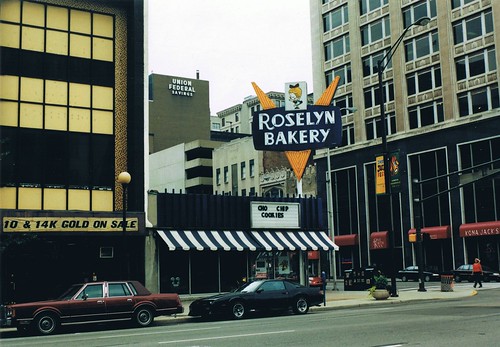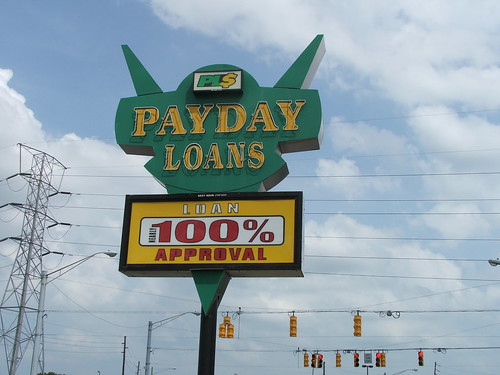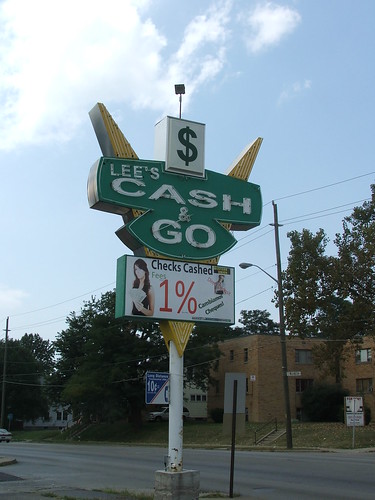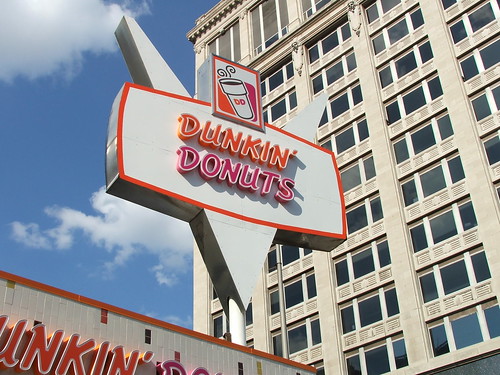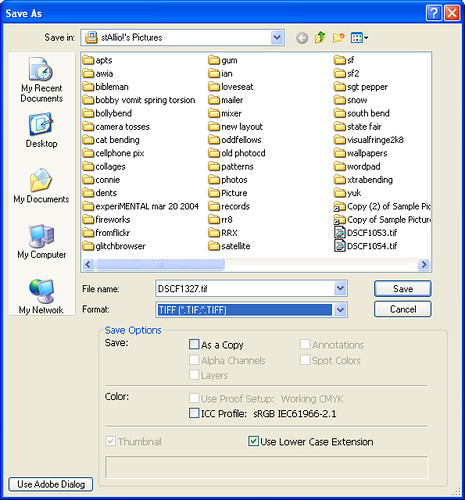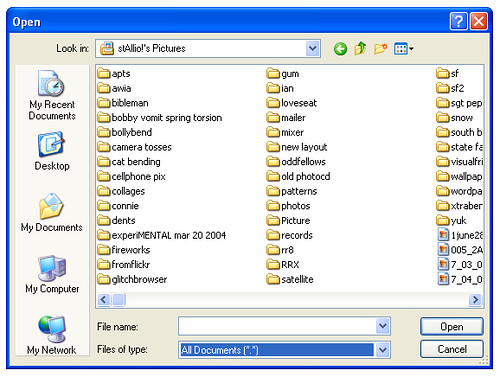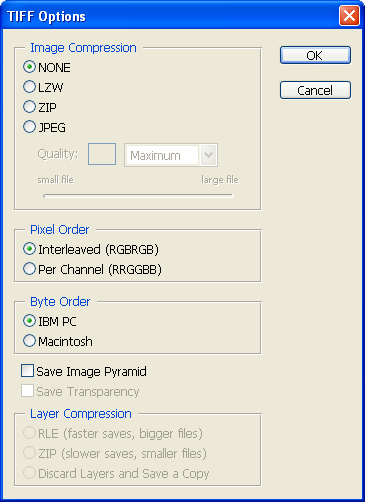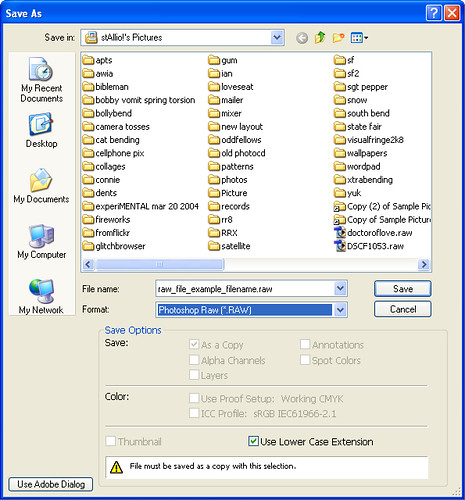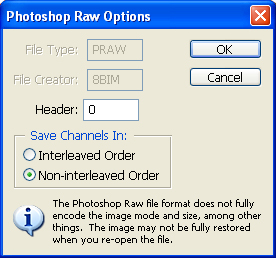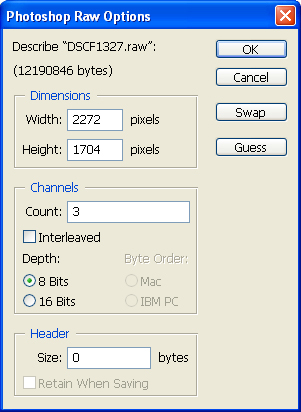
background
click to change it
persoblogs
* indicates blogs i designed
archives
i won't have much time for blogging this labor day weekend; i'll be too busy rocking out. here's the rough schedule:
friday: drive up to madison, WI with drbmd & cycle. attend friday night breakcore preparty at club inferno.
saturday: party all night at schizophrenia 3.
sunday: make our way back to indiana.
monday: head to rib america with virago to eat bbq and see the reverend peyton's big damn band and blue oyster cult.
we'll have a bit of downtime saturday afternoon, so i'm not sure what we'll be doing, but i'm pretty sure i won't be hanging out on the blogs writing shorters. i believe our motel is supposed to have wifi, though, so i might not be completely unreachable. ¶
friday: drive up to madison, WI with drbmd & cycle. attend friday night breakcore preparty at club inferno.
saturday: party all night at schizophrenia 3.
sunday: make our way back to indiana.
monday: head to rib america with virago to eat bbq and see the reverend peyton's big damn band and blue oyster cult.
we'll have a bit of downtime saturday afternoon, so i'm not sure what we'll be doing, but i'm pretty sure i won't be hanging out on the blogs writing shorters. i believe our motel is supposed to have wifi, though, so i might not be completely unreachable. ¶
the future of music coalition discusses the issue of sample clearance as it pertains to collage music, using the example of girl talk's latest record:
as a sample-based musician, this is something i know all too well. my mash smarter not harder EP samples 58 different songs, which would make clearing all the samples similarly impossible—and that's just an EP. i don't even know where most of the samples on wack cylinders came from, so even tracking down the copyright owners for that one would be impossible. ¶
Assuming Girl Talk could a) figure out who owns the copyrights, and b) get all the permissions necessary, there's another set of hurdles: the cost of licensing these samples. Each negotiation – and there would need to be at least 600 in his case – takes time, and prices can escalate very quickly, especially for samples of well-known artists or songs. (And these are exactly the types of tunes Girl Talk sampled on Feed the Animals.)
The sample license clearance process is primarily a set of private negotiations. Even though the process can be clumsy and inefficient, it ensures that the copyright owner and publisher can both set the price for the sample, and receive money for the license. It also means the original creator can share in the success of the new recordings that contains his/her original work. Indeed, in some cases, sample licenses have created an additional revenue stream for original recording artists, some of whose careers peaked decades ago.
In addition, if using a pre-recorded sample is cheaper than hiring flesh-and-bone musicians to play on the new recording, it could negatively impact the hiring and development of professional musicians.
But for the person who wants to clear a sample, the cost of licensing is extremely unpredictable and time consuming. The price can be based on such intangibles as an artist’s street credibility (on both sides of the transaction), existing negotiating history between publishers and managers and whether a sample will reinvigorate the back catalog of the sampled artist. In some cases the cost is simply untenable, with the copyright owner of the sample asking for hundreds of thousands of dollars per sample, or for percentages of sales royalties.
Given the cumulative effect of multiple expensive samples, one can see why the sample-laden albums like the Beastie Boy's Paul's Boutique or Public Enemy's It Takes a Nation of Millions couldn't be made today. It's likely that even if Girl Talk had tried to clear the hundreds of samples he used, the time necessary and licensing fees would have sunk the project.
as a sample-based musician, this is something i know all too well. my mash smarter not harder EP samples 58 different songs, which would make clearing all the samples similarly impossible—and that's just an EP. i don't even know where most of the samples on wack cylinders came from, so even tracking down the copyright owners for that one would be impossible. ¶
shorter abdul hakim shabazz: hillary clinton supporters who think she was treated in a sexist manner are just being whiny bitches. those bitches need to shut their crybaby mouths and act like men. ¶
shorter gary welsh: my buddy chris, a former rowing coach, was put through hell by mean old lawyer linda pence, just because he had sex with a couple of his 16-year-old students. for shame, linda pence! ¶
i finally found some decent old-school photos of roselyn bakery signs (in their original form, before they were morphed into other things). here's one by simonerose:
user chilcott also has a few decent ones of that same downtown location. (the location in these photos is now a dunkin' donuts.)¶
user chilcott also has a few decent ones of that same downtown location. (the location in these photos is now a dunkin' donuts.)¶
the obama campaign now has 29 offices in indiana. that's a lot for a state that's traditionally been considered "red", so instead of trying to compete, the state's republicans continue to pretend that the obama offices don't exist:
calling the obama campaign "cynical" is rich, considering the core of the mccain campaign so far has been to try to portray obama as paris hilton with a penis. but i'm glad the state GOP has officially picked up on this ridiculous idea—pushed by right-wing blogs and already proven false—that the obama offices are fake. because while republicans continue to plug their ears and cover their eyes, obama's volunteers are out there working hard to paint the state blue. and even if they aren't successful enough to give indiana's electoral votes to obama, all those new obama voters will go to the polls and vote for other democrats.
of course, this republican denial is really a form of projection, because it's actually the mccain campaign that's non-existent in indiana. it's easy to find news stories about obama offices bustling with volunteers, many of whom say "This is the first time I'm voting Democrat". good luck finding similar stories about hoosier mccain volunteers. mccain's indiana "headquarters" can't even be bothered to return their phone calls:
at least gary welsh seems to have given up on the if-i-can't-see-it-it's-not-there routine. always on the lookout for new reasons to hate obama and ignore mccain, gary has now latched on to a report that obama has pulled ads in indiana during the convention. most of us might recognize that the operative words here are "during the convention"—obama will be getting plenty of tv time this week without buying ads—but gary takes this as evidence that "Obama's 50-state strategy has been scrapped for a traditional battleground state approach". does gary think obama will suddenly shutter all those indiana campaign offices? or is he still clinging to the fantasy that they aren't real? ¶
[S]tate GOP chairman Murray Clark issued a statement calling Obama's Indiana campaign "the most cynical, artificial presidential campaign in Indiana's history."
Clark described Obama's relatively many local headquarters as "bogus storefront offices."
calling the obama campaign "cynical" is rich, considering the core of the mccain campaign so far has been to try to portray obama as paris hilton with a penis. but i'm glad the state GOP has officially picked up on this ridiculous idea—pushed by right-wing blogs and already proven false—that the obama offices are fake. because while republicans continue to plug their ears and cover their eyes, obama's volunteers are out there working hard to paint the state blue. and even if they aren't successful enough to give indiana's electoral votes to obama, all those new obama voters will go to the polls and vote for other democrats.
of course, this republican denial is really a form of projection, because it's actually the mccain campaign that's non-existent in indiana. it's easy to find news stories about obama offices bustling with volunteers, many of whom say "This is the first time I'm voting Democrat". good luck finding similar stories about hoosier mccain volunteers. mccain's indiana "headquarters" can't even be bothered to return their phone calls:
A call to McCain's Indiana headquarters, also listed as the Indiana Republican Party on www.johnmccain.com, was not returned Saturday.
at least gary welsh seems to have given up on the if-i-can't-see-it-it's-not-there routine. always on the lookout for new reasons to hate obama and ignore mccain, gary has now latched on to a report that obama has pulled ads in indiana during the convention. most of us might recognize that the operative words here are "during the convention"—obama will be getting plenty of tv time this week without buying ads—but gary takes this as evidence that "Obama's 50-state strategy has been scrapped for a traditional battleground state approach". does gary think obama will suddenly shutter all those indiana campaign offices? or is he still clinging to the fantasy that they aren't real? ¶
IBJ has a must-read article on the mayor's plan to sell off city property, including but not limited to parks. ("Even the City-County Building is on the table.")
while neighborhood activists are upset that their cherished local parks might go on the chopping block, the most controversial part of the plan is the no-bid contract awarded to venture real estate services, wherein venture gets more money the more parks are sold, and doesn't get paid at all if none are sold. under this deal, it's in venture's best interest to do everything it can to sell off as much property as possible. perhaps they'll sell off the city-county building after all.
do you think venture was chosen because it was the best firm, or because of the personal ties to bob grand?
the article also quotes gary welsh. i criticize gary a lot, but on this issue—and generally in his (post-election) analysis of the ballard administration—he's dead-on.
while neighborhood activists are upset that their cherished local parks might go on the chopping block, the most controversial part of the plan is the no-bid contract awarded to venture real estate services, wherein venture gets more money the more parks are sold, and doesn't get paid at all if none are sold. under this deal, it's in venture's best interest to do everything it can to sell off as much property as possible. perhaps they'll sell off the city-county building after all.
Julia Vaughn, policy director for the watchdog group Common Cause Indiana, called it a "sweetheart deal" that screams conflict of interest and raises questions about who is looking out for the public’s interest.
"This administration has talked a lot about increasing ethics and the need for transparency and to ensure citizens decisions are being made on their merit, but they really have been glaringly inconsistent in walking the walk," Vaughn said. "This is one of those cases. From start to finish, it doesn’t pass the smell test."
Venture's president is [John] Bales, a Republican donor known to play up his ties to Gov. Mitch Daniels and other political heavyweights. His attorney is Bob Grand, managing partner at law firm Barnes & Thornburg. Grand is president of the Capital Improvement Board and the mayor's right-hand man.
do you think venture was chosen because it was the best firm, or because of the personal ties to bob grand?
Other observers say the selection of Venture could shut out other brokers and may result in good deals for Bales, not the city.
"If you call on a piece of property, will he return your call, will he tell you what the status is and for what price? That's the test," said one top developer who spoke on condition of anonymity. "I will tell you, any broker will tell you, that's not the way it happens. What happens is, he goes out and finds somebody to buy it that he wants to do business with."
Bales has a reputation for landing deals that benefit him as much as his clients, in some cases buying properties his clients are considering leasing. And he's equally known for political connections; he represented his friend Carl Brizzi, the Marion County prosecutor, a few years ago in the lease of 72,000 square feet at 251 E. Ohio St.
the article also quotes gary welsh. i criticize gary a lot, but on this issue—and generally in his (post-election) analysis of the ballard administration—he's dead-on.
Welsh said the mayor's advisers are weaving a tangled web of conflicts of interest. He points to a $30 million real estate investment fund launched recently by Venture that has Bales, Barnes & Thornburg partner Ben Pecar and Marion County Prosecutor Carl Brizzi on its board of directors. The stated mission of the fund: Capitalize on real estate opportunities in Florida and value opportunities in Indiana.
"I don't think Ballard realizes how much they're manipulating him on this stuff," Welsh said.¶
a lot of people are picking on john mccain today because when he was recently asked how many houses he owns, he was unable to answer the question. but i don't think that's fair, because when you own as many houses as john mccain does, keeping track of them all can be quite difficult. if i owned half as many properties as mccain, i probably couldn't give you an exact number either.
as josh marshall explains, it all depends on how you count. for example, his primary residence is a $4.7M condo in phoenix. but when mccain bought the place, he bought two adjacent condos and then merged them together like voltron into one megacondo. so does that count as one house or two? or, on the other hand, is a condo a "house" at all? similarly, he owns a large piece of property at hidden valley ranch. on that property there are six houses. so does that count as one home with five guest houses, or do you count it as six houses?
so obama released an ad attacking mccain for not knowing how houses he owns. the ad claims that mccain owns seven houses. but looking at the list, i don't even know how they came up with that number. this page says there are 10 homes. that's counting the hidden valley ranch property as three houses (why three, and not four or six, i don't know). but the list also includes five condos and two lofts... neither of which are "houses" according to a strict literal definition. so if the question is explicitly how many houses he owns, the answer is three. (or six?) but if you're talking about homes, including condos and lofts, the number could be as high as 13. furthermore, the mccain campaign is quick to point out that mccain doesn't actually live in all 13 of those places. if you own a house but don't live there, do you really own it?
i can understand why obama would be fascinated by this—after all, obama grew up poor and had to work hard to earn enough money for one home in chicago and one in washington. (indeed, by john mccain's standard, obama doesn't even make enough money to qualify as "rich".) mccain, the son of an admiral who married a wealthy beer heiress, probably doesn't have time to concern himself with trivialities like counting his houses. that's the kind of thing you hire other people to do.
i just hope this doesn't backfire on obama. can't you see the response ad? barack obama claims john mccain owns seven houses. but in fact, a detailed analysis confirms that mccains only owns six houses, along with five condos and two lofts. can america afford a president who doesn't know how to count to six? i'm john mccain and i approved this message.
update: i forgot that in 2004, republicans relentlessly mocked john kerry because the kerrys own a meager five houses, which isn't even in the same league as mccain's thirteen. ¶
as josh marshall explains, it all depends on how you count. for example, his primary residence is a $4.7M condo in phoenix. but when mccain bought the place, he bought two adjacent condos and then merged them together like voltron into one megacondo. so does that count as one house or two? or, on the other hand, is a condo a "house" at all? similarly, he owns a large piece of property at hidden valley ranch. on that property there are six houses. so does that count as one home with five guest houses, or do you count it as six houses?
so obama released an ad attacking mccain for not knowing how houses he owns. the ad claims that mccain owns seven houses. but looking at the list, i don't even know how they came up with that number. this page says there are 10 homes. that's counting the hidden valley ranch property as three houses (why three, and not four or six, i don't know). but the list also includes five condos and two lofts... neither of which are "houses" according to a strict literal definition. so if the question is explicitly how many houses he owns, the answer is three. (or six?) but if you're talking about homes, including condos and lofts, the number could be as high as 13. furthermore, the mccain campaign is quick to point out that mccain doesn't actually live in all 13 of those places. if you own a house but don't live there, do you really own it?
i can understand why obama would be fascinated by this—after all, obama grew up poor and had to work hard to earn enough money for one home in chicago and one in washington. (indeed, by john mccain's standard, obama doesn't even make enough money to qualify as "rich".) mccain, the son of an admiral who married a wealthy beer heiress, probably doesn't have time to concern himself with trivialities like counting his houses. that's the kind of thing you hire other people to do.
i just hope this doesn't backfire on obama. can't you see the response ad? barack obama claims john mccain owns seven houses. but in fact, a detailed analysis confirms that mccains only owns six houses, along with five condos and two lofts. can america afford a president who doesn't know how to count to six? i'm john mccain and i approved this message.
update: i forgot that in 2004, republicans relentlessly mocked john kerry because the kerrys own a meager five houses, which isn't even in the same league as mccain's thirteen. ¶
i finally gave in—about a year after everyone else—and started using google reader. the main reason was so i could add one of those nifty "shared items" boxes to my sidebar like everyone else has. often i will find interesting articles that i want to recommend, but don't have the time or inclination to write a whole blog post about them. for months i've been coveting those shared item boxes, so today when i had a few minutes to spare, i finally set one up.
my sidebar was already pretty cluttered, so to make way for the new box, i got rid of the "greatest hits" box (nobody cares about those stories anymore anyway) and replaced it with a much-smaller "databending" box for links to my databending primer. at some point, i might also turn the "archives" and "background" boxes into drop-down lists to further cut down on space, because it's still pretty cluttered over there.
naturally, none of the default styles for the google reader clip match my design, but using the info on this page i was able to totally reformat it all to match my blog design. if you don't know javascript, though (and i admit my javascript is rusty), that page won't make much sense to you. ¶
my sidebar was already pretty cluttered, so to make way for the new box, i got rid of the "greatest hits" box (nobody cares about those stories anymore anyway) and replaced it with a much-smaller "databending" box for links to my databending primer. at some point, i might also turn the "archives" and "background" boxes into drop-down lists to further cut down on space, because it's still pretty cluttered over there.
naturally, none of the default styles for the google reader clip match my design, but using the info on this page i was able to totally reformat it all to match my blog design. if you don't know javascript, though (and i admit my javascript is rusty), that page won't make much sense to you. ¶
here's a little experiment. if you look up "gregory ballard" in the white pages, you'll only find one indianapolis address. in the interest of privacy, i won't reprint that address here, though it's easy enough to find.
here's the google satellite view of that address. the mayor lives right across the street from a golf course:

if someone paved over that golf course, or chopped down all those trees behind his large back yard, do you suppose he'd notice?
perhaps this is the problem: the mayor's house is so completely surrounded by green spaces that he doesn't understand that some of us live in apartments or houses without yards and therefore depend on neighborhood parks. ¶
here's the google satellite view of that address. the mayor lives right across the street from a golf course:

if someone paved over that golf course, or chopped down all those trees behind his large back yard, do you suppose he'd notice?
perhaps this is the problem: the mayor's house is so completely surrounded by green spaces that he doesn't understand that some of us live in apartments or houses without yards and therefore depend on neighborhood parks. ¶
the latest travesty from the mayor's office is that he wants to sell off our small neighborhood parks. ballard told the star ed board, "I don't make the connection between a property the size of this room and green space." apparently we could pave the whole city and mayor ballard wouldn't notice.
the value of these small parks is immeasurable, particularly for those who don't live in houses with nice yards (as i imagine ballard does, in which case... hello! is your back yard not a green space?). i still remember walking to the small park around the corner from the house where i lived when i was four years old. but rather than seeing these as vital community spaces, mayor ballard thinks they're just a "drain".
the mayor has hired venture real estate services to do an inventory of the city's neighborhood parks and recommend which ones to sell off. the administration points out that venture is not getting paid for the analysis, only for the selling off, and states that the company is taking a "big risk" doing it this way—apparently not realizing that this is precisely what will motivate venture to do everything in its power to ensure that lots of our little parks end up for sale. the conflict of interest is glaring.
i've said it before, i can't tell whether the mayor even has a vision for this city, but if he does, it doesn't sound like the kind of place i'd want to live.
with his parks plan, the mayor seems to have finally lost matt tully, who no longer considers ballard's bumbling to be charming:
this was tully's second column in the past week and a half that was critical of the mayor (i'm not counting the one from wednesday, which was pretty mild), and that previous column mightily pissed off ballard's office:
he ends his column by repeating the phone number: (317) 327-3601. ¶
the value of these small parks is immeasurable, particularly for those who don't live in houses with nice yards (as i imagine ballard does, in which case... hello! is your back yard not a green space?). i still remember walking to the small park around the corner from the house where i lived when i was four years old. but rather than seeing these as vital community spaces, mayor ballard thinks they're just a "drain".
the mayor has hired venture real estate services to do an inventory of the city's neighborhood parks and recommend which ones to sell off. the administration points out that venture is not getting paid for the analysis, only for the selling off, and states that the company is taking a "big risk" doing it this way—apparently not realizing that this is precisely what will motivate venture to do everything in its power to ensure that lots of our little parks end up for sale. the conflict of interest is glaring.
i've said it before, i can't tell whether the mayor even has a vision for this city, but if he does, it doesn't sound like the kind of place i'd want to live.
with his parks plan, the mayor seems to have finally lost matt tully, who no longer considers ballard's bumbling to be charming:
Mayor Greg Ballard has a way of saying things and later regretting and backtracking from his words.
It was endearing at first, in a Mr.-Smith-Goes-to-Washington sort of way. It's not anymore.
You might recall Ballard bashing public funding for the arts on the campaign trail, only to come into office begging the arts community for forgiveness. And who could forget his criticism of former Mayor Bart Peterson's Super Bowl bid, criticism that came before he realized what an economic boon a Super Bowl could be.
These days, many people are hoping Ballard's talk about pocket parks being a pesky "drain" on the city's budget is just another example of foot-in-mouth disease. They're hoping he realizes city parks are not about dollars and cents, but about green space and quality of life. They're hoping he backtracks from the silly idea of selling off the small parks.
this was tully's second column in the past week and a half that was critical of the mayor (i'm not counting the one from wednesday, which was pretty mild), and that previous column mightily pissed off ballard's office:
And speaking of calling the mayor, his cronies were very upset at me for publishing his office number in a recent column and suggesting readers dial it if they couldn't get through to the understaffed Mayor's Action Center hot line.
Mayoral press secretary Marcus Barlow said my decision to publish the mayor's office number was "counterproductive."
I'm not sure what he meant by that. Personally, I don't see anything counterproductive about taxpayers calling the mayor's office to voice their displeasure about poor service at the MAC, or to complain about the shortsighted idea of selling off park land.
he ends his column by repeating the phone number: (317) 327-3601. ¶
here's part 2 of my quest to photograph all the old roselyn bakery signs that have been rebranded by their new tenants.
this one, in the heart of downtown indianapolis, was a panda express for several years and only recently became dunkin' donuts. the book indianapolis: then and now has a photo of the place back when it was a panda express. we have a copy in the living room; someday i may scan it. but for now, you can use amazon's "search inside" feature to see it. just follow this link to the amazon page and search inside for "panda express".
this one, in the heart of downtown indianapolis, was a panda express for several years and only recently became dunkin' donuts. the book indianapolis: then and now has a photo of the place back when it was a panda express. we have a copy in the living room; someday i may scan it. but for now, you can use amazon's "search inside" feature to see it. just follow this link to the amazon page and search inside for "panda express".
shorter abdul hakim shabazz: democrat ed treacy doesn't want to come on my radio show. therefore, he is a poopoo-head, a poopoo-face, and a caca-poopoo. [pounds fist on crib, drops pacifier] ¶
i give mayor ballard a lot of flak, but here's hoping he remains in good health:
just last week, the mayor had knee surgery to fix an injury he obtained in july while bowling. ¶
Mayor Greg Ballard is wearing a heart monitor today after being admitted to a hospital on Monday while suffering chest pains.
Ballard, 53, was admitted to Community East Hospital with chest pains and shortness of breath, his office announced this morning.
Advertisement
"Doctors ran an EKG and the mayor underwent a stress test, the results of both tests were normal," a statement from press secretary Marcus J. Barlow said.
just last week, the mayor had knee surgery to fix an injury he obtained in july while bowling. ¶
last night mayor ballard introduced his budget before the council:
you may recall that his original plan was to cut $500K a year until there was nothing left to cut. this seems to say he has changed his mind and will leave that last million in place. perhaps the save indy arts petition did some good? or does the "unless other funding is found" bit mean that this is just wordplay, that he will eliminate the funding, but only once a few more donors chip in so he can pretend the cuts won't hurt?
beyond that bit of possible good news, though, there isn't much to be happy about in the new budget. the mayor still wants to cut $3 million from parks funding. the budget apparently assumes a consolidation referendum will pass and doesn't include alternative numbers in case the referendum fails. $11 million in sewer improvements were moved off the budget so that ballard can pretend it's balanced when it's actually not.
and of course, the mayor who promised that public safety would be number one wants to slash the sheriff's budget:
i remember all the republican hand-wringing about jail overcrowding and early release... it was still going on in 2006! and now that the problems have finally been solved, they immediately want to slash the budget and risk backsliding. why would the mayor want to do something so counterintuitive? the only reason that even makes sense is that this is simply an attack on a political enemy: the mayor hates the sheriff, so first he seized control of the police and now is trying to force the sheriff into privatizing the jail as well. ¶
One surprise in the speech came when Ballard said the city "cannot eliminate funding for the arts," which he had proposed earlier this month. Aides said that while the budget would trim $500,000 from arts budgets next year, the mayor's budget included setting aside at least $1 million per year unless other funding sources can be found.
you may recall that his original plan was to cut $500K a year until there was nothing left to cut. this seems to say he has changed his mind and will leave that last million in place. perhaps the save indy arts petition did some good? or does the "unless other funding is found" bit mean that this is just wordplay, that he will eliminate the funding, but only once a few more donors chip in so he can pretend the cuts won't hurt?
beyond that bit of possible good news, though, there isn't much to be happy about in the new budget. the mayor still wants to cut $3 million from parks funding. the budget apparently assumes a consolidation referendum will pass and doesn't include alternative numbers in case the referendum fails. $11 million in sewer improvements were moved off the budget so that ballard can pretend it's balanced when it's actually not.
and of course, the mayor who promised that public safety would be number one wants to slash the sheriff's budget:
[Sheriff] Anderson, a Democrat, said Monday that cutting the county jail's budget would reverse many years of work to get out from under a federal lawsuit over crowded jail conditions. The proposed 6 percent cut to his department would come after years of budget increases to improve and expand the jail system.
"In the midst of a war on crime, the citizens of Marion County cannot afford a cut in public safety," the sheriff said.
U.S. District Judge Sarah Evans Barker last summer lifted a consent decree after 35 years of federal oversight prompted by what the courts deemed to be unconstitutional conditions in the jail. Barker's decision followed a period that saw a jail expansion, court-ordered inmate releases, annexes to hold a growing number of inmates and the inception of a night court to more quickly process criminal suspects.
Anderson said Barker specifically warned against any reductions in spending that could lead the county back to crowding and court-ordered early releases.
"The mayor said he would not cut public safety," Anderson said. "We're a part of public safety. My concern is that we don't get back to where we were with crowding and early releases."
Anderson said he would work with the mayor's office to resolve the issue. The dispute seems to center on different cost estimates for the county-run, maximum-security jail.
Reynolds said the jail costs $107 per prisoner per day, while a privately run, minimum-security second jail in Marion County costs $42 per prisoner per day. Reynolds said the administration understands that it costs more to deal with heavier security issues in the county-run jail, but he said a cost of $62 per prisoner per day at a state-run, maximum-security prison showed that savings can be found.
Anderson said the administration somehow got hold of incorrect information about costs. He said the cost is $58 per prisoner per day, not the $107 cited by Reynolds. The county-run jail houses all of the most violent cases, as well as all the costly medical needs cases. Its budget also includes the cost of transportation to and from the courts.
"We had experts in to do a comparison of the jails, and after you account for the differences, it's almost a wash," Anderson said.
i remember all the republican hand-wringing about jail overcrowding and early release... it was still going on in 2006! and now that the problems have finally been solved, they immediately want to slash the budget and risk backsliding. why would the mayor want to do something so counterintuitive? the only reason that even makes sense is that this is simply an attack on a political enemy: the mayor hates the sheriff, so first he seized control of the police and now is trying to force the sheriff into privatizing the jail as well. ¶
you may recall that mayor ballard promised to balance the city's budget and slash $70 million of fluff, all without any funding cuts for public safety. so i'm a bit puzzled now that he's announced his 2009 budget:
so ballard wants more money for cops, but less money for the courts and jails? and he calls that protecting our public safety? anyone who's seen an episode of law & order knows that catching a crimial is only act one—the criminal then needs to be incarcerated pending trial and convicted. it doesn't matter how many cops are on the street if the courts and jails are so crowded and underfunded that criminals go free.
and then there's the pathetic excuse for why he's cutting the sheriff's budget: the city's minimum-security jail is cheaper, therefore the maximum-security county jail should be equally cheap. that's like going to the supermarket and complaining that apples cost more than oranges. they cost different amounts because they're totally different!
another thing: remember what i was saying yesterday about mayor ballard failing to learn from governor daniels's mistakes? i only have three words to add here: new castle riots.
the mayor claims his new budget is balanced, which i guess is true if you redefine what "balanced budget" actually means:
i never thought of balancing the budget by simply not accounting for all your expenses! pretty sneaky. and then there's stuff like this:
now, taking off the extra reassessment is probably fair, because how many times is the governor going to order reassessments? (he surely won't in 2009, as he'll no longer be up for reelection.) but wouldn't it be safer to assume your consolidation plan won't go through and budget for those expenses, rather than assume you'll get lucky again?
and of course, in addition to all these cuts, there is even more additional spending to offset those cuts, so the result is a larger budget than last year's. this is the point in the post where i would normally make another "fluff" joke, but frankly i just don't have it in me today. ¶
Ballard's budget proposal would cut about $18 million in current spending, including parks and the arts. But the budget Ballard will announce tonight proposes the majority of the cuts come from the sheriff's department, Marion Superior Courts and an uncertain consolidation of assessors.
Reynolds explained the proposal to cut $5.5 million from the department of Sheriff Frank Anderson, a Democrat, by noting that the city's contract with a private jail operator costs less than half as much as the county-operated jail. He said he understands the difference between the privately run minimum-security facility and county-operated maximum-security jail but thinks substantial savings could be found.
Joanne Sanders, the Democratic minority leader, said it didn't make sense to reduce jail spending after years of efforts to stop jail crowding that forced the early release of prisoners.
She questioned Ballard's proposal to cut $2.4 million from the court system. She said spending $12.6 million more on the police doesn't make sense if the courts won't be able to process the extra criminals caught, leaving them sitting in jail for long periods.
"It comes back to jail crowding, and we've seen the end result before," Sanders said. "It appears we're going backwards."
so ballard wants more money for cops, but less money for the courts and jails? and he calls that protecting our public safety? anyone who's seen an episode of law & order knows that catching a crimial is only act one—the criminal then needs to be incarcerated pending trial and convicted. it doesn't matter how many cops are on the street if the courts and jails are so crowded and underfunded that criminals go free.
and then there's the pathetic excuse for why he's cutting the sheriff's budget: the city's minimum-security jail is cheaper, therefore the maximum-security county jail should be equally cheap. that's like going to the supermarket and complaining that apples cost more than oranges. they cost different amounts because they're totally different!
another thing: remember what i was saying yesterday about mayor ballard failing to learn from governor daniels's mistakes? i only have three words to add here: new castle riots.
the mayor claims his new budget is balanced, which i guess is true if you redefine what "balanced budget" actually means:
Budget documents outlined in a media briefing Sunday showed the proposal would spend less in operations than it receives in revenue next year, but it also removes from the bottom line $10.8 million in sewer improvement capital expenses so the mayor can call the budget balanced. The five-year projection still showed a negative fund balance in 2012, which Reynolds called an ongoing challenge.
i never thought of balancing the budget by simply not accounting for all your expenses! pretty sneaky. and then there's stuff like this:
Ballard's budget assumes a ballot referendum consolidating township assessors will succeed, and it no longer pays for an extra reassessment like in 2008.
now, taking off the extra reassessment is probably fair, because how many times is the governor going to order reassessments? (he surely won't in 2009, as he'll no longer be up for reelection.) but wouldn't it be safer to assume your consolidation plan won't go through and budget for those expenses, rather than assume you'll get lucky again?
and of course, in addition to all these cuts, there is even more additional spending to offset those cuts, so the result is a larger budget than last year's. this is the point in the post where i would normally make another "fluff" joke, but frankly i just don't have it in me today. ¶
shorter frugal hoosiers: the fact that our post about obama's indiana field offices was completely false is actually central to our point. ¶
it turns out tully's column from the other day was prescient: mayor ballard now wants to privatize the mayor's action center, the hotline residents call to complain about potholes, stray dogs, and the like.
the MAC uses an old system that's "so outdated that online requests are printed out, taken to another computer and typed into a program that sends the request to the appropriate city department". but when the center had 15 operators, things still went fairly smoothly and call waits ranged from 90 seconds to 2 minutes. but now, there are only 10 operators, so (surprise!) things aren't going so well. rather than fill those empty positions—the article states that three positions have been intentionally left vacant—the mayor would rather privatize the whole shebang. this is perhaps the most telling sentence in the article:
in other words, fix this, but do it without spending any money. unfortunately, it doesn't work like that in the real world. you can't just take an understaffed department working with obsolete gear and magically make it work better without hiring more people or upgrading any equipment.
so the mayor turned to page one of the republican playbook, and there was his solution: privatize! you could say he's just following in the footsteps of governor mitch daniels, but if so, he hasn't been paying enough attention to learn from the governor's mistakes... like the privatization of FSSA.
here's the most obvious flaw with the concept of privatizing the MAC: how is a private operator supposed to make money on the deal? the logistics of the toll road deal are obvious: 75 years times ever-increasing tolls times many drivers equals billions of dollars of revenue for macquarie. but where is the money in listening to naptown residents complain about potholes?
i understand that privatization can reduce overhead costs. but the MAC currently only has 10 employees, working for the notoriously low pay of government employees. what private operator is really going to be able to deliver the same or better quality of service at such a low cost? the underpants gnome jokes write themselves.
in the article, jackie nytes ponders "how call center operators outside the City-County Building could be as familiar with government services as the people who live and work here". this is a good point, but i wonder if it goes far enough. obviously, wherever they are, the non-government operators won't be as familiar with government services. but where would this call center be? can we even be sure it would be in indianapolis? in indiana? if you pick up the phone next year to call the MAC, will someone in st louis or denver answer? MAC operators don't just need to be intimately familiar with city government, they need to be familiar with city geography as well. they need to know the difference between broad ripple and rocky ripple, between greenwood and ravenswood.
right-wingers like to talk about running government "like a business", seemingly failing to understand that government is not a business and therefore shouldn't be run like one. the primary responsibility of our city government is to us, the city's residents. in contrast, a private company's main responsibility is to the bottom line. government is there to serve people. business is there to generate profit. these motivations are fundamentally incompatible.
i'm starting to sound like a broken record here, but where is the "fluff" that ballard told us was in the budget? so far, his idea of cutting fluff has been eliminating arts funding, slashing parks funding, and privatizing the very means by which citizens communicate with city government. these are all things democrats predicted would happen if ballard got elected, and we were dismissed as being paranoid.
of course, there is no fluff in the budget and there never was. and now that ballard is in office, he surely understands this as well as anyone. but it's too late: he promised to cut $70 million from the budget, and in addition begged the legislature to enact a plan that he knew would significantly decrease city revenues.
it's going to be long four years. ¶
the MAC uses an old system that's "so outdated that online requests are printed out, taken to another computer and typed into a program that sends the request to the appropriate city department". but when the center had 15 operators, things still went fairly smoothly and call waits ranged from 90 seconds to 2 minutes. but now, there are only 10 operators, so (surprise!) things aren't going so well. rather than fill those empty positions—the article states that three positions have been intentionally left vacant—the mayor would rather privatize the whole shebang. this is perhaps the most telling sentence in the article:
[Sarah Taylor, director of constituent services,] said Ballard asked her to look at long-range options before throwing more resources at the problem.
in other words, fix this, but do it without spending any money. unfortunately, it doesn't work like that in the real world. you can't just take an understaffed department working with obsolete gear and magically make it work better without hiring more people or upgrading any equipment.
so the mayor turned to page one of the republican playbook, and there was his solution: privatize! you could say he's just following in the footsteps of governor mitch daniels, but if so, he hasn't been paying enough attention to learn from the governor's mistakes... like the privatization of FSSA.
here's the most obvious flaw with the concept of privatizing the MAC: how is a private operator supposed to make money on the deal? the logistics of the toll road deal are obvious: 75 years times ever-increasing tolls times many drivers equals billions of dollars of revenue for macquarie. but where is the money in listening to naptown residents complain about potholes?
i understand that privatization can reduce overhead costs. but the MAC currently only has 10 employees, working for the notoriously low pay of government employees. what private operator is really going to be able to deliver the same or better quality of service at such a low cost? the underpants gnome jokes write themselves.
in the article, jackie nytes ponders "how call center operators outside the City-County Building could be as familiar with government services as the people who live and work here". this is a good point, but i wonder if it goes far enough. obviously, wherever they are, the non-government operators won't be as familiar with government services. but where would this call center be? can we even be sure it would be in indianapolis? in indiana? if you pick up the phone next year to call the MAC, will someone in st louis or denver answer? MAC operators don't just need to be intimately familiar with city government, they need to be familiar with city geography as well. they need to know the difference between broad ripple and rocky ripple, between greenwood and ravenswood.
right-wingers like to talk about running government "like a business", seemingly failing to understand that government is not a business and therefore shouldn't be run like one. the primary responsibility of our city government is to us, the city's residents. in contrast, a private company's main responsibility is to the bottom line. government is there to serve people. business is there to generate profit. these motivations are fundamentally incompatible.
i'm starting to sound like a broken record here, but where is the "fluff" that ballard told us was in the budget? so far, his idea of cutting fluff has been eliminating arts funding, slashing parks funding, and privatizing the very means by which citizens communicate with city government. these are all things democrats predicted would happen if ballard got elected, and we were dismissed as being paranoid.
of course, there is no fluff in the budget and there never was. and now that ballard is in office, he surely understands this as well as anyone. but it's too late: he promised to cut $70 million from the budget, and in addition begged the legislature to enact a plan that he knew would significantly decrease city revenues.
it's going to be long four years. ¶
shorter gary welsh: that national enquirer story about john edwards's love child turned out to be half right (only the part about the love child was wrong). therefore, i demand an apology from democrats who mocked me for believing everything i read in the tabloids. ¶
something significant happened in today's indy star: matt tully wrote a column critical of mayor ballard. that's right: matt tully, who's told us more than once that he thinks the mayor's plan to "build a chinatown" on the south side is a good idea, has stopped writing love sonnets to the mayor and begun looking critically at his performance.
the column is about ballard's neglect of the mayor's action center, the main hotline by which citizens report things like potholes, poor trash pickup, and nonfunctioning crossing-walk signals (one of tully's pet peeves). under mayor ballard, callers to the hotline now have to wait 10-15 minutes or more, which tully finds unacceptable, considering the line is only open until 5:30pm monday through friday:
apparently to mayor ballard, the MAC is just another example of "fluff" for him to purge from the budget. answering phone calls? what a waste of money!
here's hoping that tully continues to watch mayor ballard with a critical eye. someone needs to. ¶
the column is about ballard's neglect of the mayor's action center, the main hotline by which citizens report things like potholes, poor trash pickup, and nonfunctioning crossing-walk signals (one of tully's pet peeves). under mayor ballard, callers to the hotline now have to wait 10-15 minutes or more, which tully finds unacceptable, considering the line is only open until 5:30pm monday through friday:
Not to be Mr. Obvious, but here's one way to improve service to your customers: ANSWER THEIR PHONE CALLS!
Taylor said the MAC has 10 workers who answer phones and do other clerical work. She said 15 would be ideal.
But instead of adding staff, the mayor hit the center with a 5 percent budget cut this year. And, Taylor said, he won't include funding for new operators in his 2009 budget.
It should be noted that these jobs pay about $22,000 a year. This isn't where a city with a $1.1 billion budget should skimp.
By not funding the MAC as well as it should, the mayor's office is making it hard for citizens to report the kind of basic problems that trash up a city.
Such as trash.
Of course, you can file a report at www.indygov.org/Mayor. But when you do, the report is printed off of one computer system and given to a MAC operator, who then must enter it into another system -- instead of answering phone calls.
This is nonsense.
The mayor needs to take his so-called action center seriously. He's the one who vowed to do a better job than his predecessor of listening to the people. It's awfully hard to listen to the people when you're not answering their phone calls.
apparently to mayor ballard, the MAC is just another example of "fluff" for him to purge from the budget. answering phone calls? what a waste of money!
here's hoping that tully continues to watch mayor ballard with a critical eye. someone needs to. ¶
welcome to my databending and glitch art primer! in part 1, we're going to talk about one of my favorite glitch art effects—the wordpad effect. i'm starting off with this effect because it's so easy that any windows user should be able to do it (note: i haven't tried it in vista), but it's complex enough under-the-hood that it allows me to discuss several important principles of glitch art. but first, let's define a few terms.
databending is, in essence, the artistic misuse of digital information. the term is inspired by the similar art of circuit bending; you could say that databending is like circuit bending with no circuits. the term is used most frequently in the context of electronic music (primarily glitch music).
the most common types of databending are:
glitch art is visual art that involves or is caused by digital glitches or errors. (there's some debate over this, but for our discussions, we won't include art that simply "looks glitchy"; it has to involve real glitches.) not all glitch art is databent; sometimes it occurs naturally. hardware and software fail all the time, occasionally creating glitch art. but that depends on chance. let's talk about creating glitches on purpose—using databending techniques to create glitch art.
the wordpad effect:
the wordpad effect is a simple glitch effect i discovered a couple years back, with the help of my readers. here's how it works: you take a digital photo like this:
[note: all images in this primer are hosted on flickr. click the images to go to flickr, and to see larger versions.]
all you do is trick microsoft wordpad into opening the file (it's really easy). then, after the file is open, you click save. that's it! the file is now glitched:
pretty dramatic results, eh? is it really that simple? well, almost. if you're thinking there has to be a catch, you're right, but it's not a big one.
the catch is this: the wordpad effect generally only works on certain types of image files. specifically, it only tends to work on uncompressed bitmap files—the formats i use are BMP, TIF, and my favorite, photoshop RAW. if you try to use the wordpad effect on a compressed image file, such as a JPG or PNG file, the file will most likely break. this is because the wordpad effect is highly destructive—it often adds lots of glitches—and file compression tends to make files fragile—difficult to glitch without breaking. in compressed files, each bit is important, so even a tiny glitch in the wrong place can have a major effect. we'll use that to our advantage in part 3 when we glitch JPGs, but for now, let's avoid compressed files.
how to do it, step by step:
first, find an image file you want to glitch. make sure you know exactly how large it is, in pixels. my fiancée's camera takes pictures that are 2272x1704 pixels by default, so that's the size i'll be working with. your image is probably a different size. write down this info if you think you might forget it. i'm going to use this image:
make a copy of your image file. important: never, ever glitch your original images! always, always make a copy of the file and make sure you're glitching the copy and not the original. if you glitch your original and break it, your photo will be gone forever! so don't glitch your originals! ever! i cannot stress this enough.
make sure your image file is in one of these file formats: BMP, TIF, or photoshop RAW. if it's not, you can change the format using the "save as" command in pretty much any image editor:
open up microsoft wordpad. you can find it in the start menu under "applications". wordpad is a mini text editor that comes free with microsoft windows. its main function is to provide rich text formatting and to allow users who don't have microsoft word to open word files. if you have word, wordpad is pretty much useless... except for databending.
in wordpad, go to the file menu and click "open". at the bottom of the "open" dialog box is an option called "files of type". select "all documents (*.*)" for the file type. you may now choose your image file and open it.
(a common misconception of first-time databenders is thinking that they need to manually change the file extension of their files in order to open them in an "incorrect" application. generally, the way to do it [in windows] is to save the file normally, and then change the "files of type" setting in the target app to either "all documents" or "raw".)
wait for a moment while wordpad loads and formats the file. you have successfully convinced wordpad that your image file is a text file, and it will diligently try to reformat your file to fit the screen, changing straight quotes into "smart" or curly quotes, adding line breaks, and stuff like that. this formatting is what actually causes the glitches in your image, and the process may take a few seconds if the file is large. if the file is really big, it might even appear to hang, but just leave it alone and it should eventually finish (or on rare occasions, wordpad will crash and close, in which case you should try a different file).
after the file has fully loaded, go to the file menu and click "save".
go into the image editor of your choice and try to open your databent file. you may be prompted to enter the height and width for the image (which is why i told you to write it down earlier). my image looks like this:
you might get an error message—or several. click OK. eventually, you may find that your file won't open. it's possible that wordpad has broken the file—as i said, the wordpad effect is highly destructive, and sometimes it even breaks bitmaps. if so, try again using a different file format or a different image. on the other hand, it's also possible that your image editor is too sensitive about opening files with errors; try opening the file in microsoft paint, instead. if it won't open in paint, the file is probably fried.
the image above is a TIF file. let's try again with a BMP:
at this point, you may be looking at these two images (or your own, if following along at home) and thinking that they fall short compared to the example i showed earlier. that earlier example was full of bright, vibrant colors, while these are far more grey. what gives? the difference between that first example and these two is that the latter files are interleaved and the first example was not.
interleave vs non-interleave:
interleaving is a method of storing data in a non-contiguous manner. in this context it refers to the way that the file stores color information. your bitmap file most likely uses RGB color mode. this means that color values are stored as a combination of red, green, and blue. because the file is uncompressed, the file lists the color value for every pixel in the image. the interleaving refers to what order these pixel values are stored in.
if an image file is interleaved, the color values are stored in RGB order, one pixel at a time, like this: RGBRGBRGB... the bitmap data in the file (which comes after the header) will be basically just one long block of RGB values—for TIFs, they're stored from top-left down, and for BMPs, they're stored from bottom-right up. (BMPs are also stored in BGR order rather than RGB.) so, if you were to, say, insert two bytes of data near the beginning of the bitmap data, right before the R value, it would then "push" the other pixels over, and the R would become G, and so on. this way, you can easily create RGB color shifts in bitmaps, where reds become greens, greens become blues, and blues become reds. you may see a lot of these in your databent interleaved images.
on the other hand, if the file is not interleaved, the color information is saved as three color channels, one each for red, green, and blue. each channel is basically a grayscale image, and the bitmap data in the file stores the entire red channel, then the entire green channel, and finally the entire blue channel. when you run the wordpad effect on a non-interleaved file, each channel gets its own unique glitches, and the channels come out of alignment with each other, which can lead to some stunningly colorful bends.
so how do you create non-interleaved bitmaps? the BMP file format doesn't allow it; BMPs are always interleaved. in the TIF file format, interleave is optional, so you can choose whether your TIFs use interleaving (default is yes)... if your software supports it. a lot of image software doesn't support non-interleaved TIF files; i don't think any of the applications that come with windows do, nor does the popular (and free) GIMP editing suite. adobe photoshop does support non-interleaved TIFs:
so here is my image, as a non-interleaved TIF, run through wordpad:
then again, if you have adobe photoshop, you might be better off with the photoshop RAW format, which is possibly my favorite format for bending.
photoshop RAW format:
photoshop RAW format is a proprietary raw image format available in adobe photoshop. as far as i know, no other application can open these files, which have an .RAW file extension. so if you don't have photoshop, you can't use this format (though your image editor may have its own similar format; you never know).
what makes this format so great is its flexibility. not only can you choose whether or not to use interleaving, but setting the number of color channels is as easy as typing in a number. this allows you to work with grayscale files and CMYK color (though my experiments with CMYK have been underwhelming). and perhaps best of all, this format allows you to create files with zero headers that are impossible to break!
pretty much every file on your computer has a file header containing various data, such as what type of file it is, how large it is, and so on. most of the time, you need to carefully avoid bending the file header, because corrupting the header is the easiest way to break the file (with rare exceptions). photoshop RAW format allows us to avoid dealing with headers at all, simply by typing 0 into the header box. if you have a RAW file with no header, you can do just about anything you want to it—bend it in any way you can imagine—and it will still open.
i've now resaved my source image as a non-interleaved raw file with no headers. let's see what happens when i run it through wordpad and then try to reopen it in photoshop:
since we saved the file with no headers, photoshop has no way of knowing anything about this image. sometimes it is able to guess the size settings based on how large the file is, but most likely it will guess wrong. so when using this format, it's essential that you make a note of your image's exact pixel dimensions before bending it. in this case, as i said earlier, the image is 2272x1704 pixels, the file is not interleaved, and the number of color channels is 3 (for RGB). here's what the image looks like after running it through wordpad:
looks a lot like the non-interleaved TIF, doesn't it? the two formats are pretty similar, so aesthetically you won't notice a whole lot of difference between bent RAW files and bent TIF files that use the same settings. the biggest difference is that you can break TIF files by corrupting the header.
so that's the wordpad effect. you might note that the images in the tutorial are far more heavily glitched than the example at the top of the post. how heavy the glitching gets depends on your source image. sometimes, you'll even get images that don't bend at all! the pattern behind this is a mystery... let me know if you crack it.
note also that after you've run an image file through wordpad once, running it through a second time has no effect. that's because wordpad has already reformatted the file to its liking. if you want to use the effect on the same image multiple times, you'll need to alter the data somehow in between passes, for example by saving the image to a new file. another interesting variant is to flip the databent image horizontally, and then run the flipped image through wordpad—i call this reverse wordpad.
that's it for part 1 of this primer. if you're on windows, you should now know enough to apply the wordpad effect to all your images. if you're not on windows, the information should still come in handy for glitching bitmap files. and even if you're already a databender, hopefully you've learned something.
in part 2, i'll discuss sonification and making music out of the files on your hard drive. then in part 3, i'll come back to glitch art and talk about bending JPG files. ¶
databending is, in essence, the artistic misuse of digital information. the term is inspired by the similar art of circuit bending; you could say that databending is like circuit bending with no circuits. the term is used most frequently in the context of electronic music (primarily glitch music).
the most common types of databending are:
- reinterpretation—converting a file from one medium to another (say, converting an executable file into an image file) or from one file format to a dissimilar format)
- sonification—the reinterpretation of non-audio data into audio data—probably the most common form of databending
- forced errors—forcing an application or piece of hardware to fail in the hopes that it will behave unexpectedly or the data will corrupt
- incorrect editing—editing a file using software/hardware intended for a different form of data; say, editing non-text files in a text editor
glitch art is visual art that involves or is caused by digital glitches or errors. (there's some debate over this, but for our discussions, we won't include art that simply "looks glitchy"; it has to involve real glitches.) not all glitch art is databent; sometimes it occurs naturally. hardware and software fail all the time, occasionally creating glitch art. but that depends on chance. let's talk about creating glitches on purpose—using databending techniques to create glitch art.
the wordpad effect:
the wordpad effect is a simple glitch effect i discovered a couple years back, with the help of my readers. here's how it works: you take a digital photo like this:
[note: all images in this primer are hosted on flickr. click the images to go to flickr, and to see larger versions.]
all you do is trick microsoft wordpad into opening the file (it's really easy). then, after the file is open, you click save. that's it! the file is now glitched:
pretty dramatic results, eh? is it really that simple? well, almost. if you're thinking there has to be a catch, you're right, but it's not a big one.
the catch is this: the wordpad effect generally only works on certain types of image files. specifically, it only tends to work on uncompressed bitmap files—the formats i use are BMP, TIF, and my favorite, photoshop RAW. if you try to use the wordpad effect on a compressed image file, such as a JPG or PNG file, the file will most likely break. this is because the wordpad effect is highly destructive—it often adds lots of glitches—and file compression tends to make files fragile—difficult to glitch without breaking. in compressed files, each bit is important, so even a tiny glitch in the wrong place can have a major effect. we'll use that to our advantage in part 3 when we glitch JPGs, but for now, let's avoid compressed files.
how to do it, step by step:
first, find an image file you want to glitch. make sure you know exactly how large it is, in pixels. my fiancée's camera takes pictures that are 2272x1704 pixels by default, so that's the size i'll be working with. your image is probably a different size. write down this info if you think you might forget it. i'm going to use this image:
make a copy of your image file. important: never, ever glitch your original images! always, always make a copy of the file and make sure you're glitching the copy and not the original. if you glitch your original and break it, your photo will be gone forever! so don't glitch your originals! ever! i cannot stress this enough.
make sure your image file is in one of these file formats: BMP, TIF, or photoshop RAW. if it's not, you can change the format using the "save as" command in pretty much any image editor:
open up microsoft wordpad. you can find it in the start menu under "applications". wordpad is a mini text editor that comes free with microsoft windows. its main function is to provide rich text formatting and to allow users who don't have microsoft word to open word files. if you have word, wordpad is pretty much useless... except for databending.
in wordpad, go to the file menu and click "open". at the bottom of the "open" dialog box is an option called "files of type". select "all documents (*.*)" for the file type. you may now choose your image file and open it.
(a common misconception of first-time databenders is thinking that they need to manually change the file extension of their files in order to open them in an "incorrect" application. generally, the way to do it [in windows] is to save the file normally, and then change the "files of type" setting in the target app to either "all documents" or "raw".)
wait for a moment while wordpad loads and formats the file. you have successfully convinced wordpad that your image file is a text file, and it will diligently try to reformat your file to fit the screen, changing straight quotes into "smart" or curly quotes, adding line breaks, and stuff like that. this formatting is what actually causes the glitches in your image, and the process may take a few seconds if the file is large. if the file is really big, it might even appear to hang, but just leave it alone and it should eventually finish (or on rare occasions, wordpad will crash and close, in which case you should try a different file).
after the file has fully loaded, go to the file menu and click "save".
go into the image editor of your choice and try to open your databent file. you may be prompted to enter the height and width for the image (which is why i told you to write it down earlier). my image looks like this:
you might get an error message—or several. click OK. eventually, you may find that your file won't open. it's possible that wordpad has broken the file—as i said, the wordpad effect is highly destructive, and sometimes it even breaks bitmaps. if so, try again using a different file format or a different image. on the other hand, it's also possible that your image editor is too sensitive about opening files with errors; try opening the file in microsoft paint, instead. if it won't open in paint, the file is probably fried.
the image above is a TIF file. let's try again with a BMP:
at this point, you may be looking at these two images (or your own, if following along at home) and thinking that they fall short compared to the example i showed earlier. that earlier example was full of bright, vibrant colors, while these are far more grey. what gives? the difference between that first example and these two is that the latter files are interleaved and the first example was not.
interleave vs non-interleave:
interleaving is a method of storing data in a non-contiguous manner. in this context it refers to the way that the file stores color information. your bitmap file most likely uses RGB color mode. this means that color values are stored as a combination of red, green, and blue. because the file is uncompressed, the file lists the color value for every pixel in the image. the interleaving refers to what order these pixel values are stored in.
if an image file is interleaved, the color values are stored in RGB order, one pixel at a time, like this: RGBRGBRGB... the bitmap data in the file (which comes after the header) will be basically just one long block of RGB values—for TIFs, they're stored from top-left down, and for BMPs, they're stored from bottom-right up. (BMPs are also stored in BGR order rather than RGB.) so, if you were to, say, insert two bytes of data near the beginning of the bitmap data, right before the R value, it would then "push" the other pixels over, and the R would become G, and so on. this way, you can easily create RGB color shifts in bitmaps, where reds become greens, greens become blues, and blues become reds. you may see a lot of these in your databent interleaved images.
on the other hand, if the file is not interleaved, the color information is saved as three color channels, one each for red, green, and blue. each channel is basically a grayscale image, and the bitmap data in the file stores the entire red channel, then the entire green channel, and finally the entire blue channel. when you run the wordpad effect on a non-interleaved file, each channel gets its own unique glitches, and the channels come out of alignment with each other, which can lead to some stunningly colorful bends.
so how do you create non-interleaved bitmaps? the BMP file format doesn't allow it; BMPs are always interleaved. in the TIF file format, interleave is optional, so you can choose whether your TIFs use interleaving (default is yes)... if your software supports it. a lot of image software doesn't support non-interleaved TIF files; i don't think any of the applications that come with windows do, nor does the popular (and free) GIMP editing suite. adobe photoshop does support non-interleaved TIFs:
so here is my image, as a non-interleaved TIF, run through wordpad:
then again, if you have adobe photoshop, you might be better off with the photoshop RAW format, which is possibly my favorite format for bending.
photoshop RAW format:
photoshop RAW format is a proprietary raw image format available in adobe photoshop. as far as i know, no other application can open these files, which have an .RAW file extension. so if you don't have photoshop, you can't use this format (though your image editor may have its own similar format; you never know).
what makes this format so great is its flexibility. not only can you choose whether or not to use interleaving, but setting the number of color channels is as easy as typing in a number. this allows you to work with grayscale files and CMYK color (though my experiments with CMYK have been underwhelming). and perhaps best of all, this format allows you to create files with zero headers that are impossible to break!
pretty much every file on your computer has a file header containing various data, such as what type of file it is, how large it is, and so on. most of the time, you need to carefully avoid bending the file header, because corrupting the header is the easiest way to break the file (with rare exceptions). photoshop RAW format allows us to avoid dealing with headers at all, simply by typing 0 into the header box. if you have a RAW file with no header, you can do just about anything you want to it—bend it in any way you can imagine—and it will still open.
i've now resaved my source image as a non-interleaved raw file with no headers. let's see what happens when i run it through wordpad and then try to reopen it in photoshop:
since we saved the file with no headers, photoshop has no way of knowing anything about this image. sometimes it is able to guess the size settings based on how large the file is, but most likely it will guess wrong. so when using this format, it's essential that you make a note of your image's exact pixel dimensions before bending it. in this case, as i said earlier, the image is 2272x1704 pixels, the file is not interleaved, and the number of color channels is 3 (for RGB). here's what the image looks like after running it through wordpad:
looks a lot like the non-interleaved TIF, doesn't it? the two formats are pretty similar, so aesthetically you won't notice a whole lot of difference between bent RAW files and bent TIF files that use the same settings. the biggest difference is that you can break TIF files by corrupting the header.
so that's the wordpad effect. you might note that the images in the tutorial are far more heavily glitched than the example at the top of the post. how heavy the glitching gets depends on your source image. sometimes, you'll even get images that don't bend at all! the pattern behind this is a mystery... let me know if you crack it.
note also that after you've run an image file through wordpad once, running it through a second time has no effect. that's because wordpad has already reformatted the file to its liking. if you want to use the effect on the same image multiple times, you'll need to alter the data somehow in between passes, for example by saving the image to a new file. another interesting variant is to flip the databent image horizontally, and then run the flipped image through wordpad—i call this reverse wordpad.
that's it for part 1 of this primer. if you're on windows, you should now know enough to apply the wordpad effect to all your images. if you're not on windows, the information should still come in handy for glitching bitmap files. and even if you're already a databender, hopefully you've learned something.
in part 2, i'll discuss sonification and making music out of the files on your hard drive. then in part 3, i'll come back to glitch art and talk about bending JPG files. ¶
Labels: databending
the star has a story about the mayor's plan to eradicate arts funding, but it doesn't have much new info, mainly because the mayor isn't sharing many details of his new budget, other than his plans to do away with all of the city's arts funding and slash $2.3 million from our parks.
but the arts community isn't going to sit there quietly while the mayor eliminates what little funding it gets—funding which doesn't go to individual artists, but to arts programs for the commuity and particularly for much-needed children's programs. i just heard about a new blog-slash-petition dedicated to saving the city's arts funding: saveindyarts.wordpress.com. from the initial post:
to sign the petition, go here and leave a blog comment, using your full name. ¶
but the arts community isn't going to sit there quietly while the mayor eliminates what little funding it gets—funding which doesn't go to individual artists, but to arts programs for the commuity and particularly for much-needed children's programs. i just heard about a new blog-slash-petition dedicated to saving the city's arts funding: saveindyarts.wordpress.com. from the initial post:
City funding for the arts is largely symbolic; $1.5 million out of a $1.2 BILLION-dollar budget in 2008 (yep, that equals 1% for the arts). But it still is an important symbol of all that is important, or should be, to Indianapolis. The arts represent diversity. Education. Thoughfulness. Creativity. Enrichment. Dialogue and debate. The arts make us think. The arts make us laugh, cry and shout out in protest. Some, like the Arts Council of Indianapolis, can point to studies that link the arts with increased graduation rates and decreased crime.
Whatever your relationship is with the arts, now is the time to support it. Do you agree that the city should maintain arts funding at its current level as a demonstration to corporate and other civic leaders that the arts are not only an important part of Indianapolis' public personality but also contribute to educating and enriching the lives of our citizens, even the most vunerable ones?
This Web site is dedicated to collecting 1,000 supporting votes for maintaining public arts funding. Yep, that's roughly 1% of the Greater Indianapolis population - the same percentage as what the city provides to the arts. If 1% of Indy residents can speak up for the arts, perhaps the city leaders can allocate 1% of its funding for a different kind of public safety - the proactively safe, alternative to hanging out, educational arts and culture.
If you vote, I promise to send the responses to our City County Councilors and to Mayor Ballard. This site will be up until the August 11 budget hearings. Let's see how far we get.
to sign the petition, go here and leave a blog comment, using your full name. ¶
shorter gary welsh: while i normally despise anonymous cowards who refuse to identify themselves online, i will make an exception for this "techdude" person, because he's saying what i want to hear: that obama is a secret muslim who wasn't born in this country!
bonus shorter gary: not only is obama's birth certificate a hoax, but so is HIV! the true cause of AIDS is in fact AIDS medication! spread the word! ¶
bonus shorter gary: not only is obama's birth certificate a hoax, but so is HIV! the true cause of AIDS is in fact AIDS medication! spread the word! ¶
abdul hinted at it a few days ago, and the ibj confirms it: mayor ballard doesn't so much plan to cut arts funding as to eviscerate it. over the next three years, he plans to slash the arts budget from a paltry $1.5 million to the paltriest number of all: zero dollars. similarly, he wants to slash the city's parks budget by 13 percent.
where is the $70 million in "fluff" that ballard promised would be so easy to find? apparently, to mayor ballard, arts and parks—the kinds of stuff that make indy a pleasant place to live—are no more than fluff to be excised. ballard went to the statehouse and begged them to institute the governor's property tax plan, knowing in advance that it would force local governments throughout the state to make massive budget cuts... and these are the kinds of cuts he had in mind?
the city's cultural leaders—who have suspected cuts would be coming since ballard's election—are dismayed:
mayor peterson had his flaws, but at least he had a vision for this city that i broadly agreed with. i'm not sure what kind of spartan vision the mayor has for us—other than building a chinatown on the south side, of course—but it doesn't seem like the kind of place i'd want to live. or as IUPUI's brian vargus put it:
where is the $70 million in "fluff" that ballard promised would be so easy to find? apparently, to mayor ballard, arts and parks—the kinds of stuff that make indy a pleasant place to live—are no more than fluff to be excised. ballard went to the statehouse and begged them to institute the governor's property tax plan, knowing in advance that it would force local governments throughout the state to make massive budget cuts... and these are the kinds of cuts he had in mind?
the city's cultural leaders—who have suspected cuts would be coming since ballard's election—are dismayed:
"We obviously all recognize there are going to be cuts he needs to make," said Glen Kwok, executive director of the International Violin Competition of Indianapolis. "But what was outlined to us was not reasonable. To have a three-year phase-out program to zero was completely unfathomable."
[...]
"There are few line items in the budget with such a good rate of return," said Kwok of the International Violin Competition. "And if public safety is truly at the top of the mayor's agenda, which I know it is, one must consider the long-term impact on today’s youth."
Since he took office, Ballard has noted cultural leaders' concerns, and pledged to assist them wherever possible, particularly from the bully pulpit.
But many arts leaders have remained skeptical.
"Part of the problem is, Mayor Peterson worked so hard from the beginning to establish a profile in the cultural community," said John Pickett, executive director of the Indianapolis Opera. "When he went in to help major arts organizations, his statements had much more weight than Mayor Ballard's would."
Other cities Indianapolis competes against directly—both for businesses and talent—do far more than even Peterson did to support the arts, Pickett pointed out.
Denver, for example, has a dedicated sales tax as well as a seat tax at major sporting events, which together generate $13 million for its cultural arts community annually.
mayor peterson had his flaws, but at least he had a vision for this city that i broadly agreed with. i'm not sure what kind of spartan vision the mayor has for us—other than building a chinatown on the south side, of course—but it doesn't seem like the kind of place i'd want to live. or as IUPUI's brian vargus put it:
"Oliver Wendell Holmes said taxes are the price we pay for civilization. Ballard's [idea of] civilization is some kind of Marine Corps."¶
it was bad enough yesterday when blogger spontaneously marked a bunch of popular blogs as spam (or "splog"), rendering them uneditable. (the paranoid quickly blamed their enemies, but as usual with such things, the problem should be attributed to human error.)
but then, sitemeter, the popular traffic-tracking service, updated their scripts without properly testing them first, and forgetting about a javascript bug in IE 7. this resulted in many thousands of sites—this one included—becoming unreadable in that browser (firefox and all other browsers are unaffected). this site explains the problem and lists some workarounds. i've fixed this blog so that readers who are cursed with IE can see it, but haven't gone through all the static non-blog pages (music pages and the like) to update those; hopefully sitemeter will fix their scripts so i won't have to.
update: naturally, as soon as i posted about the sitemeter problem, it seemingly resolved itself. so i'm going back to my original code; let me know if you have problems. ¶
but then, sitemeter, the popular traffic-tracking service, updated their scripts without properly testing them first, and forgetting about a javascript bug in IE 7. this resulted in many thousands of sites—this one included—becoming unreadable in that browser (firefox and all other browsers are unaffected). this site explains the problem and lists some workarounds. i've fixed this blog so that readers who are cursed with IE can see it, but haven't gone through all the static non-blog pages (music pages and the like) to update those; hopefully sitemeter will fix their scripts so i won't have to.
update: naturally, as soon as i posted about the sitemeter problem, it seemingly resolved itself. so i'm going back to my original code; let me know if you have problems. ¶
as i did last year, i am again participating in visualfringe, the visual art show attached to indyfringe. this year i should have two pieces hanging at henry's coffee bistro at 627 east street, including the piece pictured above.
visualfringe has an extra twist this year: patrons get to vote on their favorite artwork, and the winning piece will be commemorated in the form of a be indypendent sticker. the show runs through august, but voting only takes place tonight and tomorrow before 5 p.m.
word is that the mayor and city council are about to slash arts funding, so the art community needs your support more than ever. so come on out to fountain square, check out some local art, vote for your favorite, and maybe buy something if you can afford it. (i know i could use the money; i'm planning my wedding.)
p.s. i forgot to mention: fans of databending and glitch art (like my visualfringe submissions) will definitely want to stay tuned, as i'm working on a databending and glitch art primer that will consolidate much of what i've learned from my years of experiments. part 1 is coming soon—it's about the wordpad effect (which i used to create the picture above) and along the way will cover lots of valuable info about bending bitmap image files. ¶

